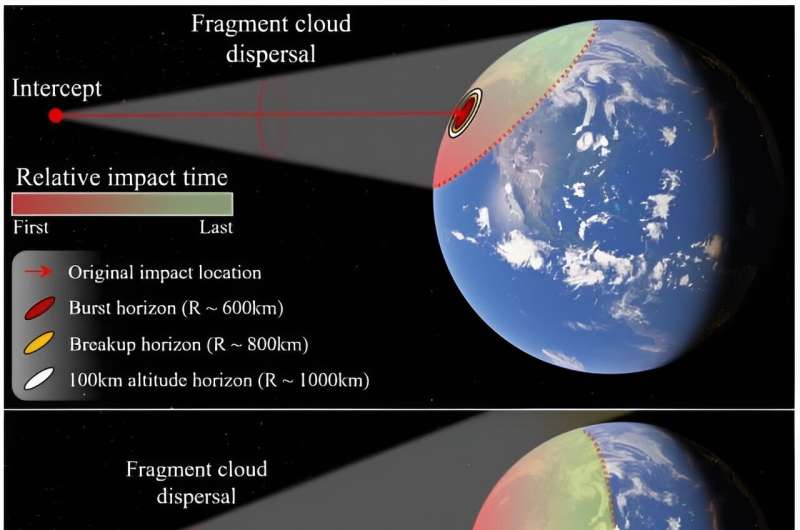This article has been reviewed according to Science X's editorial process and policies. Editors have highlighted the following attributes while ensuring the content's credibility:
fact-checked
preprint
trusted source
proofread
An asteroid came uncomfortably close to Earth in July. Could we have stopped it?

In July of this year, an asteroid roughly 30 to 60 meters across passed Earth to within one-quarter of the distance to the moon. It posed no threat to our world, but if it had struck Earth it would have created a blast three times greater than the 2013 Chelyabinsk impact. And we only noticed it two days after it passed.
It's a good example of how sizable asteroids still miss detection. Not ones large enough to threaten our extinction, but large enough to threaten millions of lives. If a similar asteroid was detected just days before impact, could we stop it? That's the question raised by a recent study posted to the arXiv preprint server.
The paper considers an asteroid similar to the aforementioned 2023 NT1 and looks at whether it could be countered by the Pulverize It (PI) method. It sounds like something out of a blockbuster movie, where the heroes blow up the rock at just the last minute, but with only a short warning it is about the only option. Deflecting an asteroid can be done, but only if we have a long lead time. So the question really becomes whether we can launch a counter-offensive in time and whether that counter-offensive would be enough to fragment the asteroid into harmless bits.
Surprisingly, the answer to both of those questions seems to be yes. Given current launch technology, we could launch a defense rocket within a day, assuming we were to keep one on standby. To pulverize the asteroid, the authors propose using a combination of kinetic and explosive impactors. The rocket would release a cloud of impactors at a high relative speed to the asteroid, shattering the body into fragments no more than 10 meters across. Given a typical density and composition, hypervelocity simulations show that this would be an effective way to destroy the asteroid. Even if the fragmentation occurred just hours before Earth impact, the resulting debris cloud would pose limited risk to us.
All that said, this proposal is still just a proof of concept. We have no rockets in place to launch, and no impactor system for it to carry. If we detected an imminent asteroid tomorrow we would have no way to counter it. We have the ability to build a planetary defense rocket, but the question remains on whether we have the will to build one.
More information: Brin K. Bailey et al, Asteroid 2023 NT1: A Cautionary Tale, arXiv (2023). DOI: 10.48550/arxiv.2310.13112
Journal information: arXiv
Provided by Universe Today





















